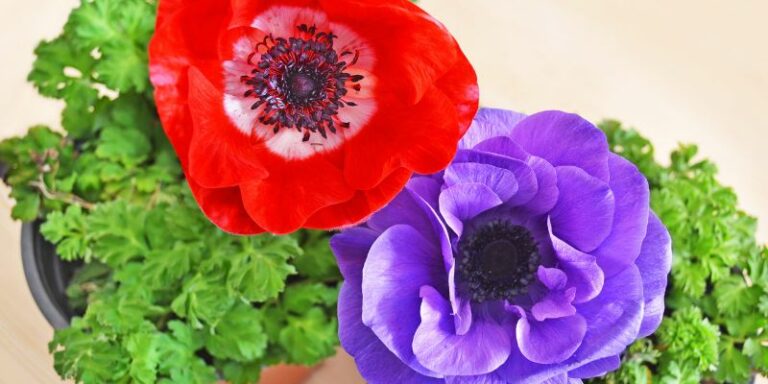How to Grow Hesperantha: A Gardener’s Guide
Hesperantha, commonly known as the ‘river lily’ or ‘Cape lily,’ is a genus of perennial flowering plants that bring vibrant color and grace to the garden with their star-shaped flowers. Beloved by gardeners for their year-round appeal and relatively low maintenance, hesperantha can be the star of any landscape or mixed border. In this extensive guide, we will explore the ins and outs of cultivating hesperantha, crafted to assist both the budding horticulturist and the seasoned gardener in nurturing these beautiful blooms.
Understanding Hesperantha

Before we plunge into the soil, it’s important to become acquainted with the plant and its requirements for healthy growth. Hesperantha plants are characterized by their slender, upright growth habit, which yields clumps of grassy leaves and delicate, funnel-shaped flowers carried on elongated stems. Knowing the nuances of hesperantha will pave the way for a bountiful garden display.
Description and Varieties
Hesperantha encompasses around 90 species, offering a spectrum of colors from white and cream to pink and red. These perennials are often confused with its close relative, the more well-known crocosmia, but can be distinguished by their typically larger and softer flowers. Some popular varieties include Hesperantha coccinea, known for its vivacious red blooms, and Hesperantha peacockii, which flaunts charming pink flowers.
Ideal Growing Conditions
To thrive, hesperantha prefer full to partial sun, with a minimum of four hours of direct sunlight. They are also partial to well-draining soil rich in organic matter, making them an excellent addition to rock gardens, borders, and large pots.
The preferred climate is where frosts are infrequent, as hesperantha does not tolerate prolonged periods of freezing temperatures. If grown in colder climates, it’s best to provide the plants with a warm, sheltered site, especially during the winter.
Planting Hesperantha
The key to a successful hesperantha garden is a well-considered planting strategy. Here’s how you can ensure your hesperantha takes root and thrives.
Selection and Location
When selecting a location, choose an area that receives adequate sunlight and offers some protection from harsh winds, which can damage the delicate flowers. Keep in mind that hesperantha will need space to multiply, so be sure not to overcrowd the area.
Soil Preparation
Prepare the soil by loosening it to a depth of at least 12 inches, incorporating compost or well-rotted manure to improve drainage and fertility. This step is vital, as hesperantha’s health and long-term growth plans are rooted in the soil’s quality.
Planting Techniques
Hesperantha can be planted directly in the ground or in large containers. Set the bulbs or transplants at a depth three times their size, with the pointed end facing up. This ensures proper anchorage and encourages strong sprouting.
Watering and Fertilizing
After planting, give the soil a thorough watering to settle it around the roots. During the growing season, maintain regular moisture, but be wary of overwatering, which can cause bulbs to rot. A balanced fertilizer in early spring and late summer encourages flowering and strengthens the plants.
Caring for Hesperantha
Your work is not done once the hesperantha is in the ground. Proper care throughout the growing season is crucial for a picture-perfect garden.
Pruning and Deadheading
Remove spent flower spikes to encourage continuous bloom. At the end of the growing season, cut back the foliage to the ground, giving the bulbs a fresh start for the following year.
Pest and Disease Management
Keep an eye out for aphids, snails, and slugs, which are common hesperantha pests. To deter them, employ natural predators, like ladybugs, and use organic pest controls. Diseases are rare, but maintaining good air circulation and avoiding overwatering can prevent fungal issues.
Winter Protection and Maintenance
For regions with colder winters, provide a layer of mulch for insulation. In spring, remove any dead material and spread a layer of compost around the plants to provide nutrients for the new growth.
Propagation Methods
To expand your hesperantha collection or share the joy of these lovely plants with friends, knowing the proper propagation methods is invaluable.
Seed Sowing
Collect seeds from mature flower heads and sow them in a pot in the spring. Keep the soil consistently moist and, with patience, you will see new plants emerging within a few weeks.
Division of Bulbs
As hesperantha becomes crowded, usually every three to four years, dig up the clump and separate the bulbs. Replant the divisions immediately or store them in a cool, dark place until the next growing season.
Tips for Successful Propagation
Whether it’s seeds or bulbs, ensure that the new plants are provided with the same care and growing conditions as mature ones. Successful propagation often depends on the ability to recreate the familiar environment in which the plants have previously thrived.
Seasonal Care and Bloom Time
Understanding the blooming cycle of hesperantha can help you anticipate and prepare for the seasonal care the plant requires.
Hesperantha’s Blooming Cycle
Hesperantha typically bloom in the late summer or fall, putting on a spectacular floral display that can last for several weeks. They are renowned for the color they bring to the garden when many other plants are fading.
Seasonal Care Guide
During the blooming season, provide supplemental water if the weather is particularly dry to support the abundance of flowers. Once the bloom cycle is over, it’s time to start reducing water and applying fertilizer to help the plant store energy for the next year’s bloom.
Conclusion
Cultivating hesperantha can be an immensely rewarding experience for any gardener. The process of planting, caring, and watching these beautiful flowers grow from season to season is a true joy for plant enthusiasts. By following the detailed tips provided in this guide, you are now equipped to cultivate hesperantha with confidence and success. Remember, patience and understanding are key, and the effort you invest in your garden will be amply rewarded with the elegance and color hesperantha brings. Happy gardening, and may your hesperantha bloom beautifully!






